Perez alert to Red Bull favouring Verstappen after 2023 Australian GP
Another race, another win for Max, but is paranoia creeping into the team battle? Mark Hughes reports from Albert Park
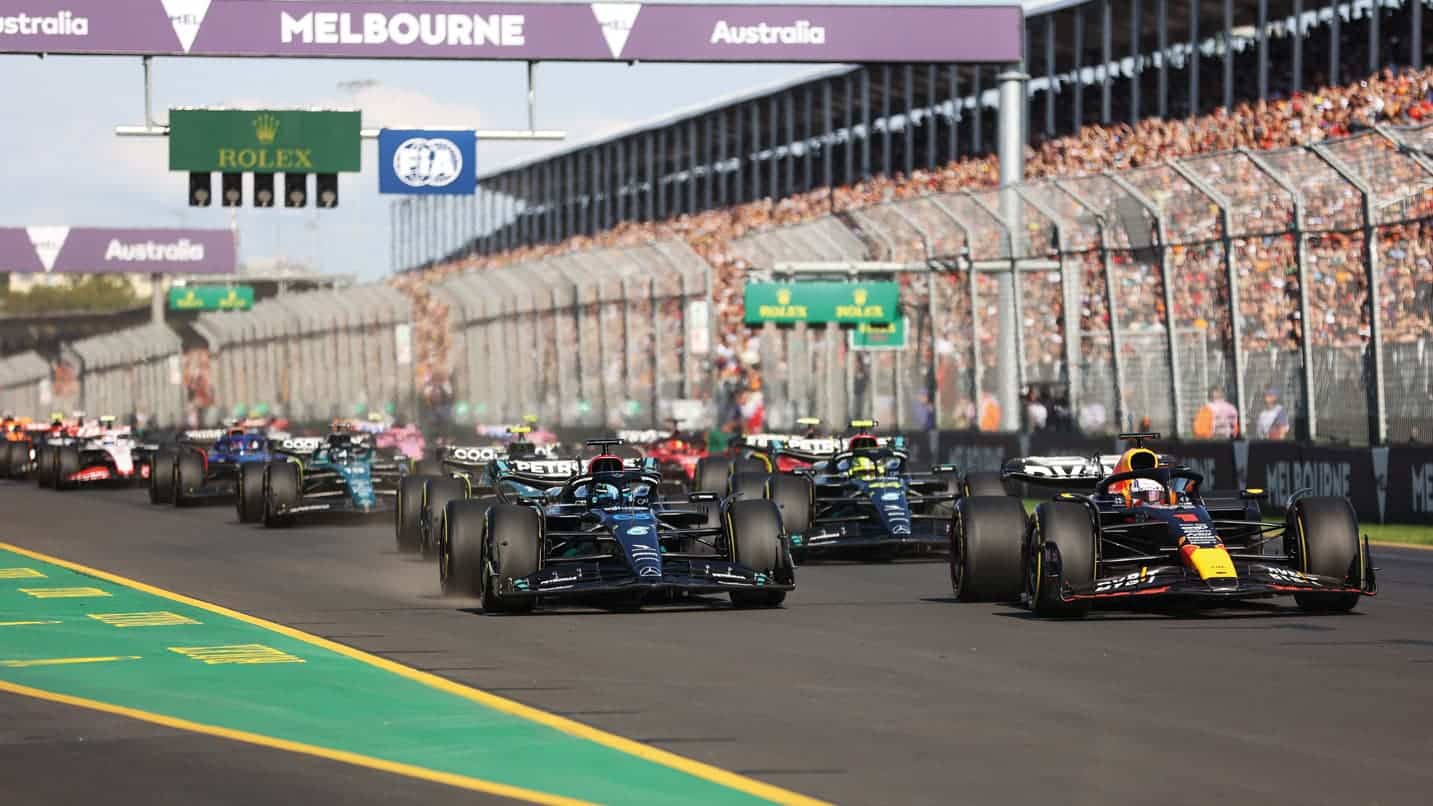
Max Verstappen leads George Russell’s Mercedes at the start, but would cede the leatothe Mercedes before battling back.
Getty Images
Three red flags, four safety cars and a bizarre ending caused by a hole in the sporting regulations created lots of distraction on a sunny race day in Albert Park. But they didn’t really alter much. The story of the weekend as a component of this championship was that Max Verstappen had a near-perfect weekend and his team-mate Sergio Pérez had something of a nightmare. ‘Checo’ came into the weekend only one point behind and left it trailing by 15.
As outlined here last month, the dynamics at Red Bull are different this year – at least at this stage of the season – as it’s clear that Pérez is Verstappen’s only feasible challenger for a third consecutive world title, such is the advantage of the RB19. Pérez was setting out his stall early in the Melbourne weekend, saying on Thursday: “When I first came to the team things were very different. Basically, they were just going racing with two cars because they had to, you know. I can say now that I really feel part of the team, really feel I have my place and am well respected. I think that’s something good to have as a driver and I really believe I have the full support of the team as much as Max does and that I will have every single opportunity to win the championship as much as Max does.”
Reliability on each of their cars is going to be disproportionately important regardless of whether Verstappen’s habitual performance advantage over Pérez is maintained. Two DNFs from Verstappen, and it would take seven races of him beating Pérez into second to recover. Hence why Verstappen had been so vocal in his dissatisfaction in Jeddah, where a driveshaft failure in qualifying had left him starting 14 places behind his team-mate and was ultimately the reason he finished second to him there. Pérez, under no illusions about how Verstappen is the main focus of the team but feeling this is the biggest opportunity of his long career, clearly feels that it’s incumbent upon Red Bull to give him an equal shot this year. Putting it out there that he had faith in the team to do that put the spotlight on them.
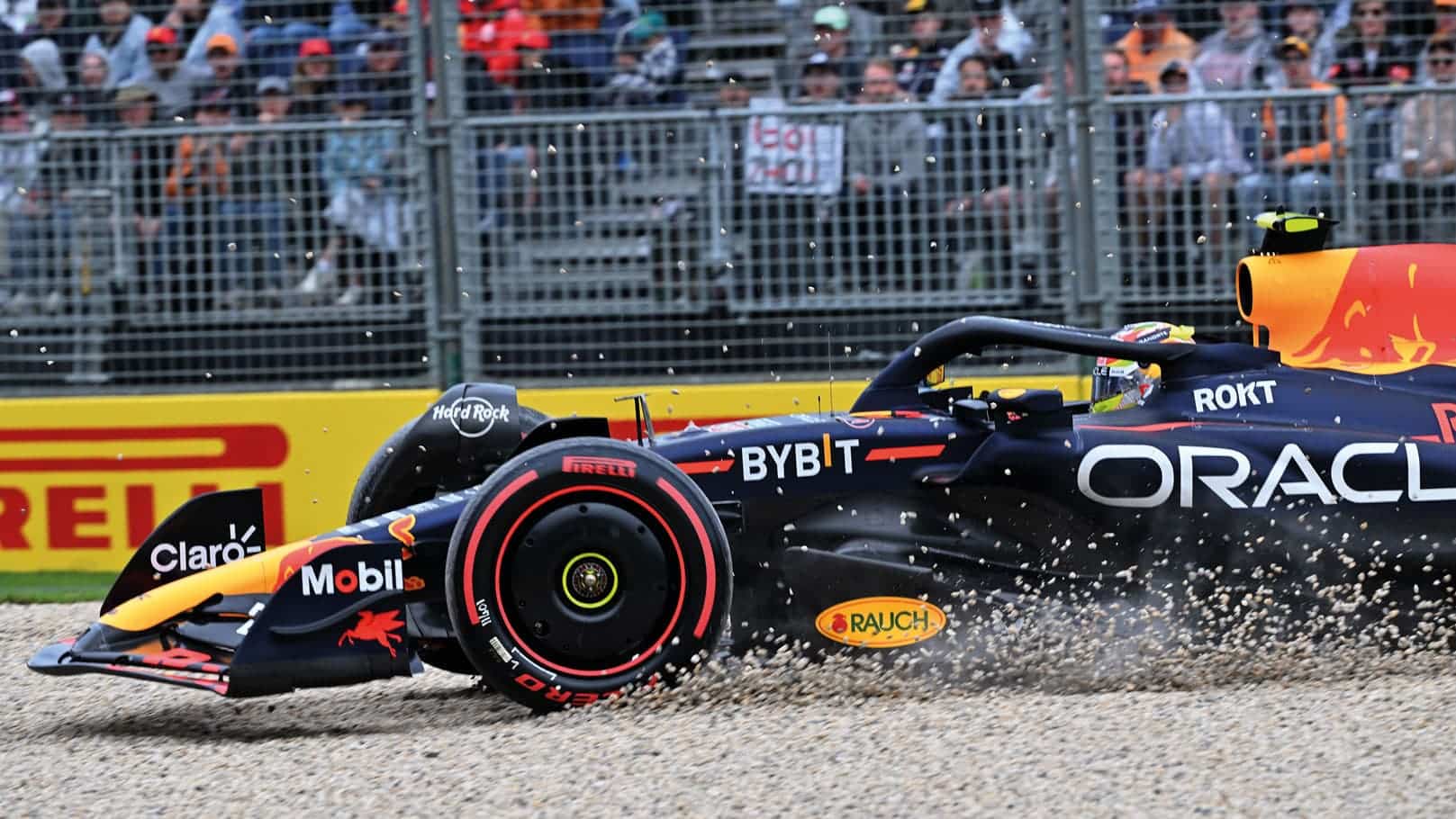
Sergio Pérez endured braking issues during practice, and called on ‘the team’ to sort it out
So it was unfortunate that Pérez should have suffered a braking problem through Friday and Saturday, which gave him several trips through various gravel traps and ultimately saw him beached in one of them before he’d put a lap on the board in qualifying. Verstappen – who’d suffered a similar issue on Friday – had a straightforward Saturday and duly set a comfortable pole position. Pérez would start from the pitlane after a change of brake material, even though the team was adamant that no apparent technical issue could be found to explain his qualifying incident.
The problems of Friday and (for Pérez) into third practice on Saturday were caused by a run-on issue with the power unit, meaning the engine wasn’t completely shut off as they turned into slow corners. According to the team, this was fixed on both cars by the time qualifying began and was not the cause of Pérez’s off. Pérez remained unconvinced.
“We had a bit of a technical issue from FP3 and we thought we fixed it but we obviously didn’t,” he said. “It’s something that is moving the brake balance quite far forward under braking. It was very difficult to do anything out there. I became a passenger as soon as I touched the brake.
“I just hope that we are able to fix it as a team tomorrow and be able to race and minimise the damage… I trust totally my team that we will be able to overcome this problem and be able to have a strong race pace.”
His references to ‘the team’ sounded distinctly pointed. Those of the brake balance were intriguing. Especially when he said, “I don’t want to go into too much detail,” about the nature of that problem.
“George Russell was able to scorch down Max’s inside into Turn 1”
Let’s get the distracting matter of the incident-packed race – which Verstappen won comfortably, with Pérez coming through to fifth – out of the way first before coming back to the Red Bull situation.
The two Mercedes of George Russell and Lewis Hamilton had qualified second and third, taking advantage not only of Pérez’s problems but also those of Ferrari where Carlos Sainz and Charles Leclerc suffered a scrappy Q3 in which they tripped over themselves, as one tried to do his attack lap immediately and the other with a build lap first. This was a dilemma being faced up and down the pitlane as the cool track and smooth surface made it difficult to generate front tyre temperature quickly enough to be ready by the start of the first flying lap. Fernando Alonso’s Aston Martin qualified in between the Mercs and Ferraris, the three makes of car on much the same pace but no threat to Verstappen.
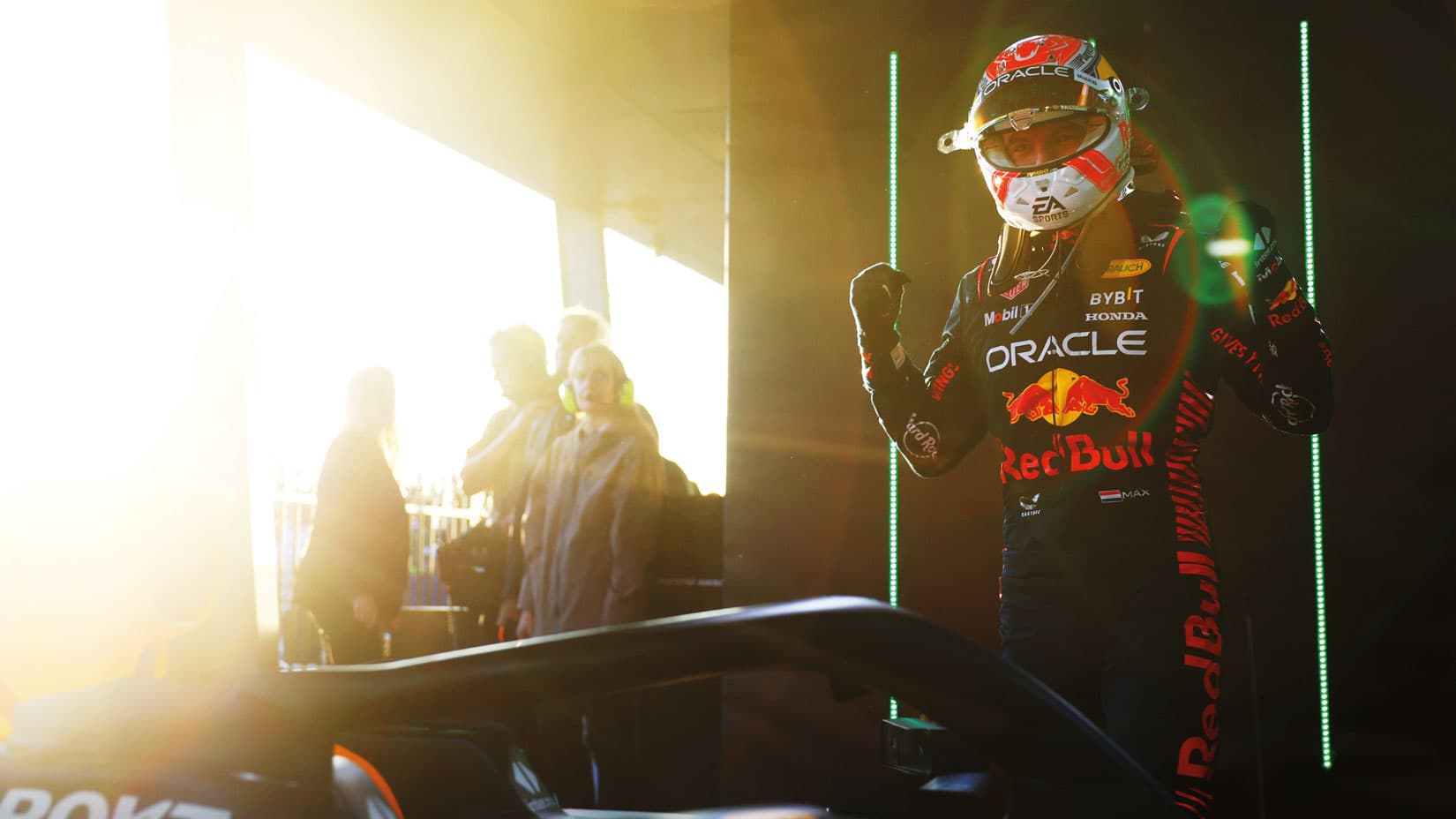
Business as usual for Verstappen
The smooth surface of Albert Park had probably played its part in the improved competitiveness of the Mercedes W14, the team finding that its performance improved more than proportionately when it could be run so low to the ground. Not Red Bull low, but lower than at the previous two tracks. The team also solved the tyre conundrum well, with an unambiguous prep lap/attack lap and it could generate the front temperature easier than the Red Bull or Aston Martin.
The car’s startline performance was also terrific, so much so that Russell was able to scorch down Verstappen’s inside into Turn 1. As Max’s line was compromised to accommodate the Merc to his inside, it placed him awkwardly on the run out of Turn 1/2 and down to Turn 3, somewhat bunching the cars immediately behind and allowing Hamilton to then slice inside him into 3. That bunching played its part in Leclerc getting beached in the Turn 3 gravel trap after contact with Lance Stroll’s Aston Martin. Strike one Ferrari.
The way Verstappen had not chosen to fight out the first two turns with the Mercedes pair was untypical of his usual style. But this year he has a car with which he can win without risk. Mercedes drivers are not his competition. With Pérez starting at the back, it was important to maximise the points damage to his team-mate. “I could have been a bit more aggressive,” he said. “I knew I had a quick car and knew losing a position at the start wasn’t the end of the world.” It was particularly quick in the DRS sections, of which there were four this year. As soon as that was enabled, by which time his tyres would be nicely warmed, it would surely be a simple matter to find the front.
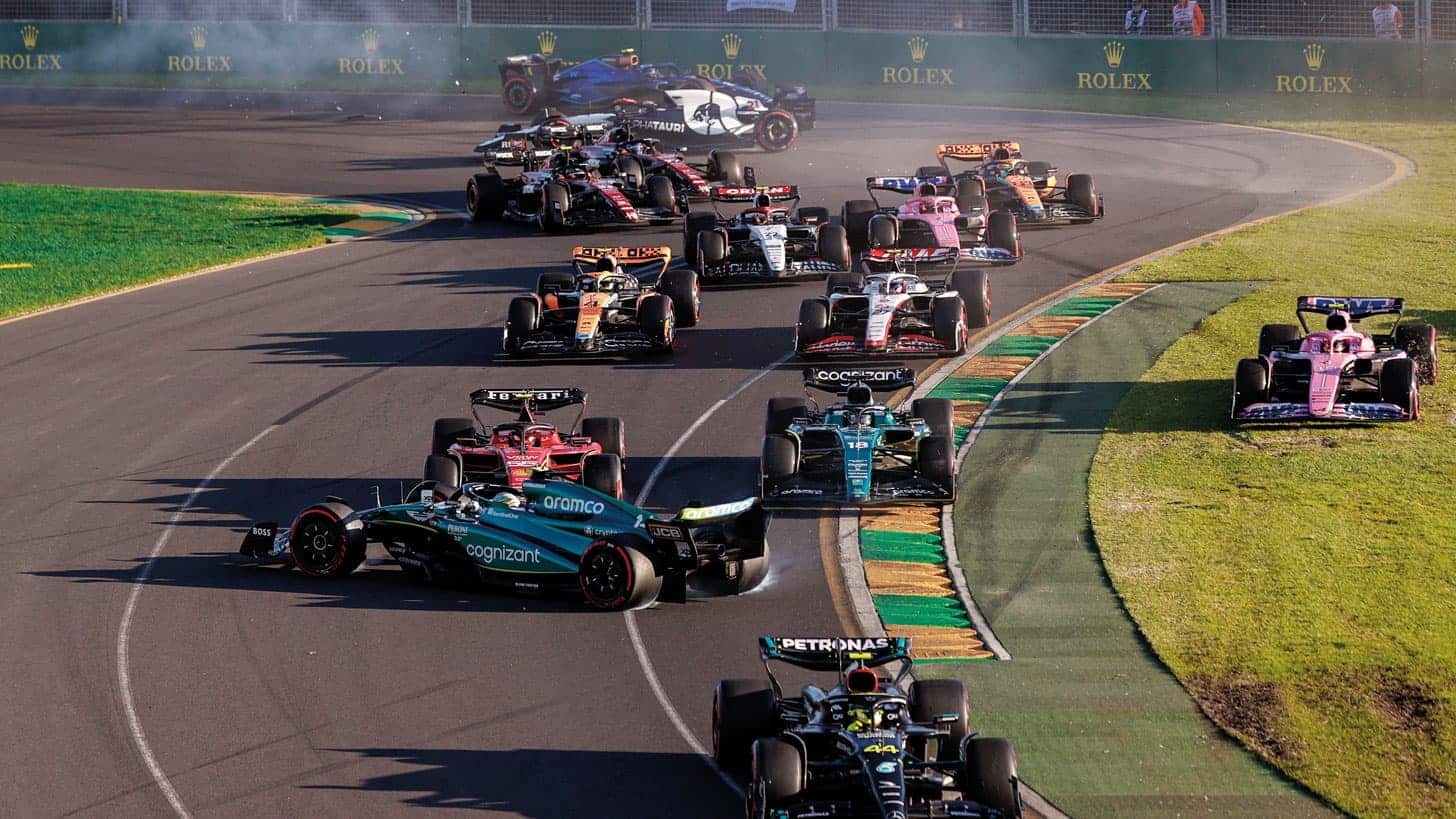
Fernando Alonso is tipped round at Turn 1 after the final standing start, earning Carlos Sainz a penalty.
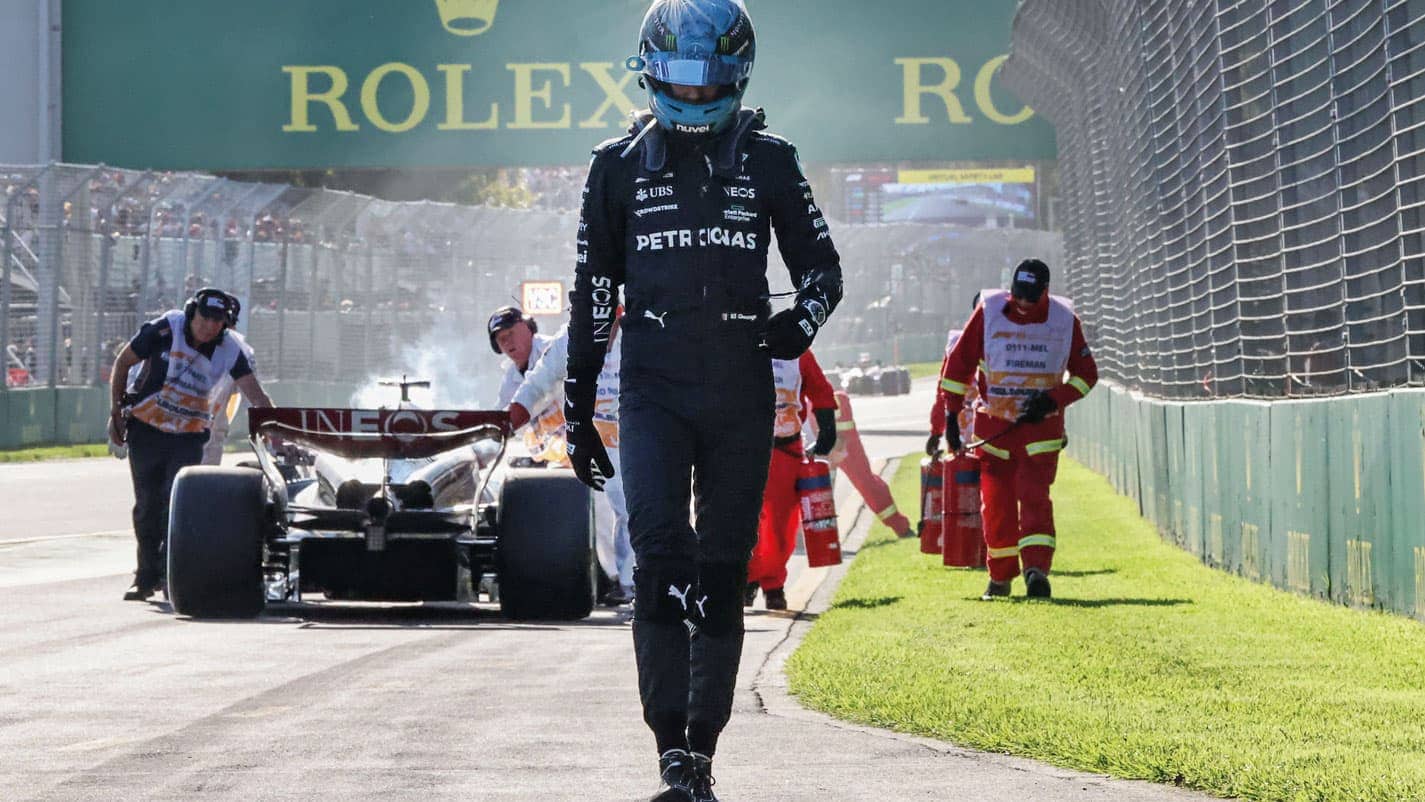
Russell trudges away from his failed Mercedes
Getty Images
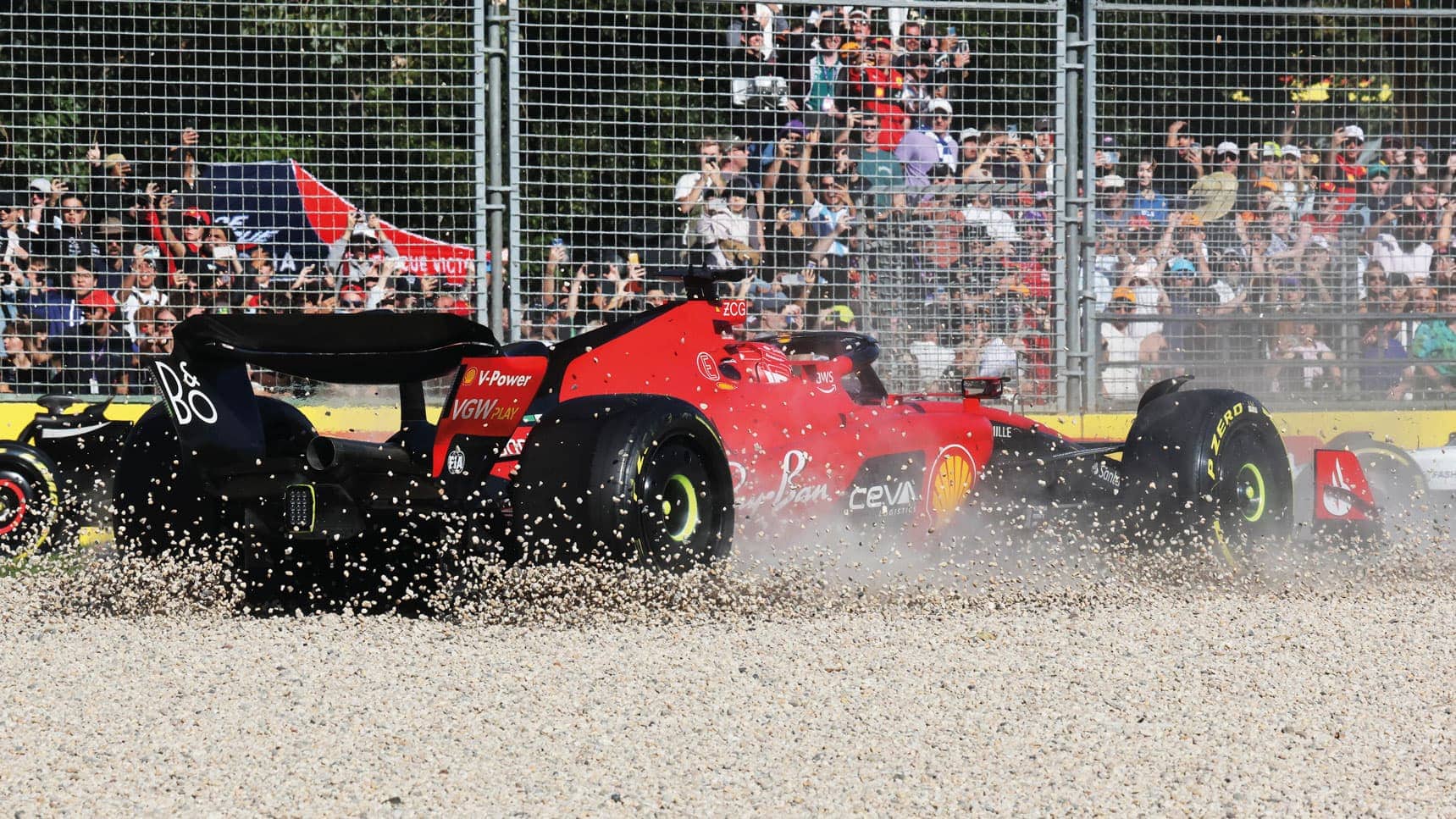
Charles Leclerc was an early visitor to the gravel following contact with Lance Stroll’s Aston
Grand Prix Photo
But before that could happen Alex Albon – who’d qualified his Williams a great eighth and was running sixth – crashed heavily at Turn 6. This was lap seven. Out came the safety car. Anyone pitting at this time could do so with a 10sec saving to the pack compared to a stop with the pack at racing speed. But it was earlier than ideal for what was poised to be a one-stop race with 51 laps still to go. Mercedes brought race leader Russell in, swapping his mediums for hards. Ferrari did the same with Sainz, from fourth. Hamilton, Verstappen and Alonso stayed out, now filling the top three. Then the safety car was replaced by a red flag, a ruinous development for Russell and Sainz (who’d rejoined seventh and 11th respectively). It meant the others could effectively change tyres for free and would take the standing restart from their unpitted race positions.
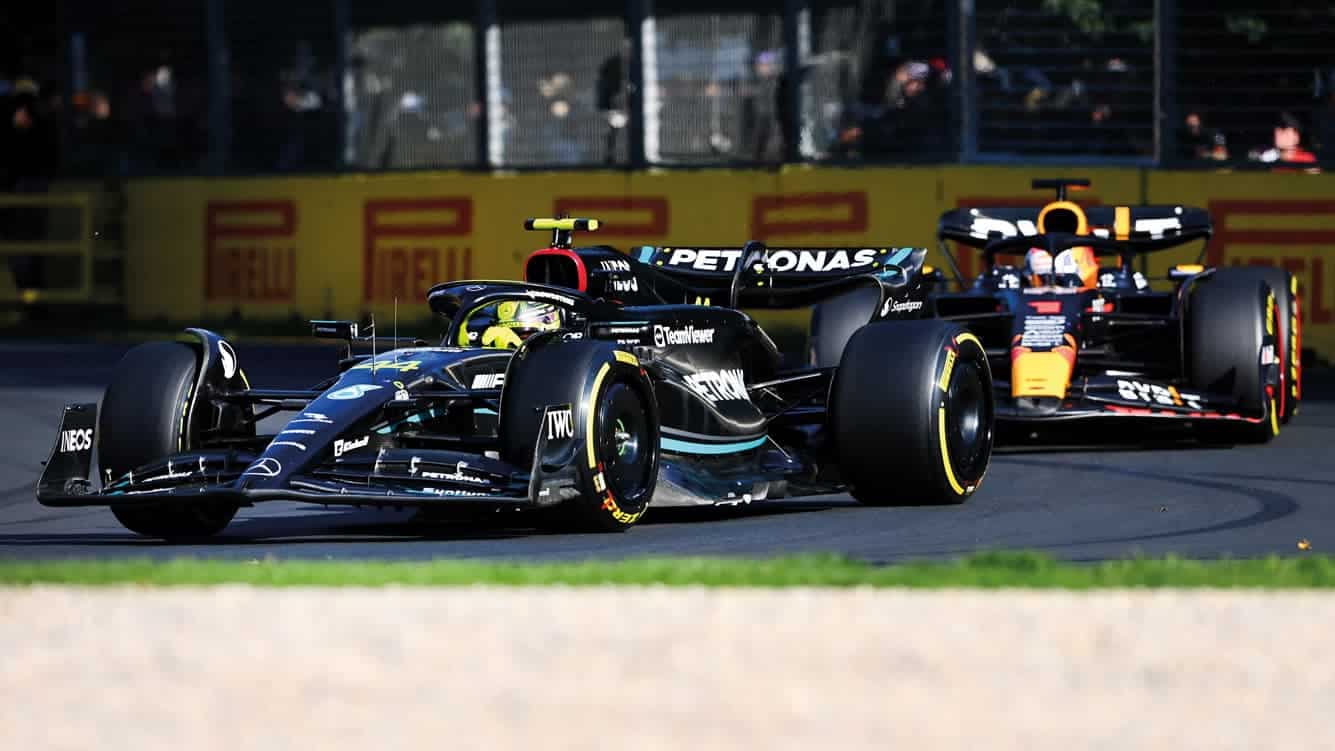
Mercedes found some useful pace at Albert Park, being able to run the W14 lower
Getty Images
Hamilton comfortably retained the lead from Verstappen upon the restart, everyone now on hard tyres on which to go the remaining distance. This would mean a considerable degree of tyre management for everyone and lots of DRS trains, as using the DRS from the car ahead is an effective way of doing a lap time without unduly straining the tyres. But Verstappen used the feature more aggressively to put a pass on Hamilton for the lead on the long run to Turn 9 on lap 12. He pulled out 2sec in just the remainder of the lap and steadily built up a 10sec lead, leaving Hamilton to a tense struggle in keeping Alonso out of his DRS range, something in which he was ultimately successful as they each alternately attacked and backed off, managing the tyres.
“In the chaos, Gasly pincered team-mate Ocon into the wall”
Russell’s power unit gave out in a fiery way not long after the restart. Sainz made good progress through the mid-pack, culminating with a great move on Pierre Gasly’s Alpine to go fourth. But Gasly and Stroll were able to hang onto the Ferrari’s tail with the aid of DRS. Pérez, having started at the back, took a little while to reach them – but did so. He’d passed the battling Lando Norris and Nico Hülkenberg and was right with Stroll, looking to pounce, with just four laps to go when the race went under a safety car again. Kevin Magnussen had clipped the Turn 2 wall and stripped off his right-rear tyre, trailing tyre and wheel rim debris behind. Again, the safety car was replaced by a red flag and the cars would line up on the grid for their third standing start of the day.
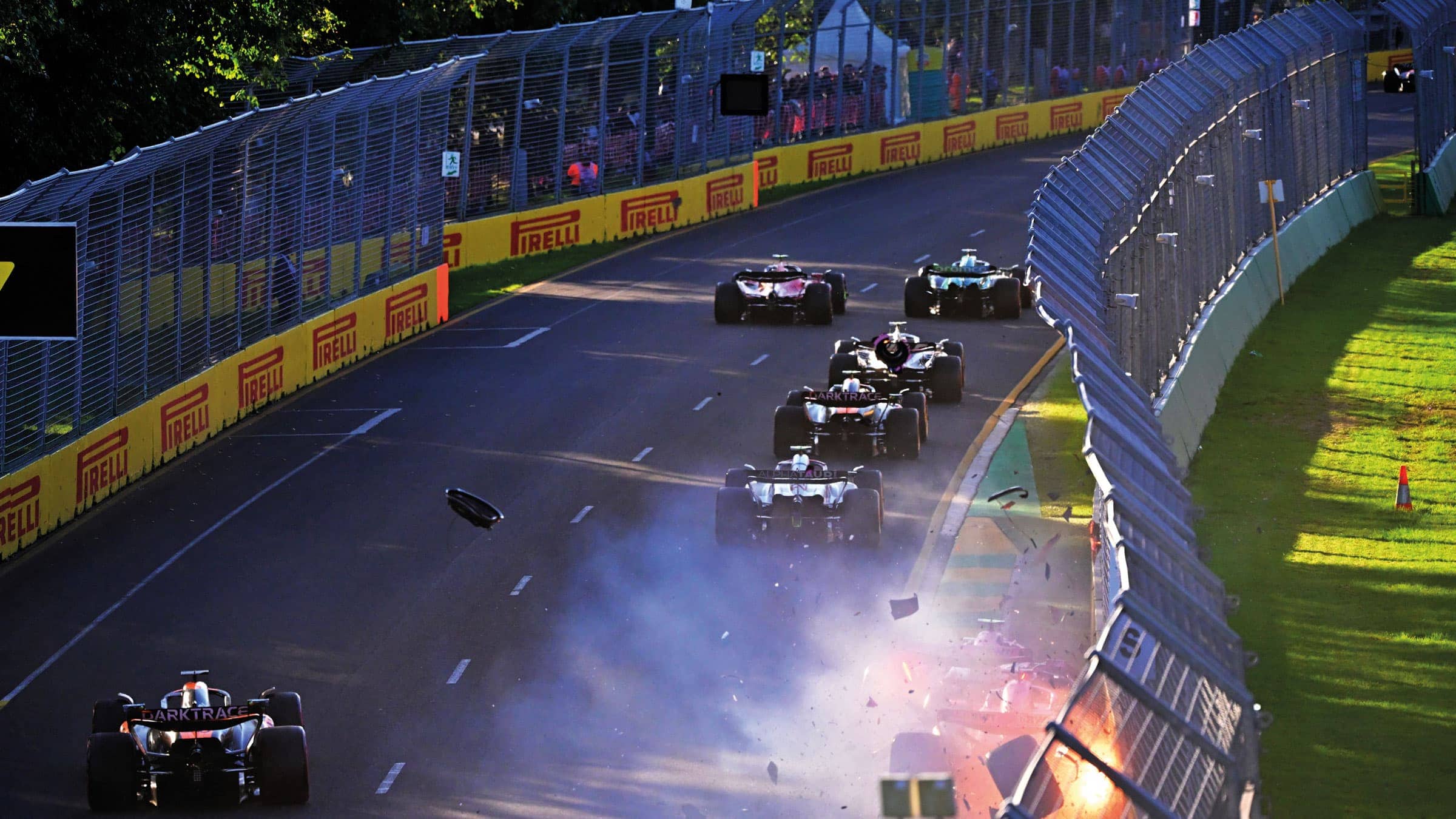
The pink flashpoint. Pierre Gasly and Esteban Ocon’s Alpines collide after the late restart, leading to the final red flag of the race
Getty Images
Verstappen’s 10sec lead had been taken away and with just two laps of racing left, another iffy start could potentially lose him the race. Hamilton seemed more concerned about the Alonso threat than excited by the possibility of stealing Verstappen’s win. That’s how it was poised as the lights went out. Verstappen this time made a good start and was untroubled by Hamilton into Turn 1, but Sainz, on cold tyres and brakes, vying with Gasly into Turn 1, clipped Alonso into a spin. In the chaos this triggered, Gasly pincered team-mate Esteban Ocon against the wall and both Alpines were out, heavily damaged. Alonso had got going again, but fell back while the other Aston of Stroll went straight on into the Turn 3 gravel.
“Carlos Sainz’s 5sec penalty promoted Lance Stroll to fourth”
The red flag came out once more. Now, there were insufficient laps left in which to have a race. But there was still time to complete it behind the safety car – which meant that the two Astons got to take up their race positions before the restart incidents. The three world champions in the field – Verstappen, Hamilton and Alonso – shared the podium.
Sainz was awarded a 5sec penalty for the Alonso incident, dropping him from fourth across the line to an official 12th. This promoted Stroll to fourth from Pérez (who set fastest lap), Norris, Hülkenberg, McLaren’s Oscar Piastri (his first championship points), Zhou Guanyu’s Alfa and Yuki Tsunoda’s AlphaTauri.
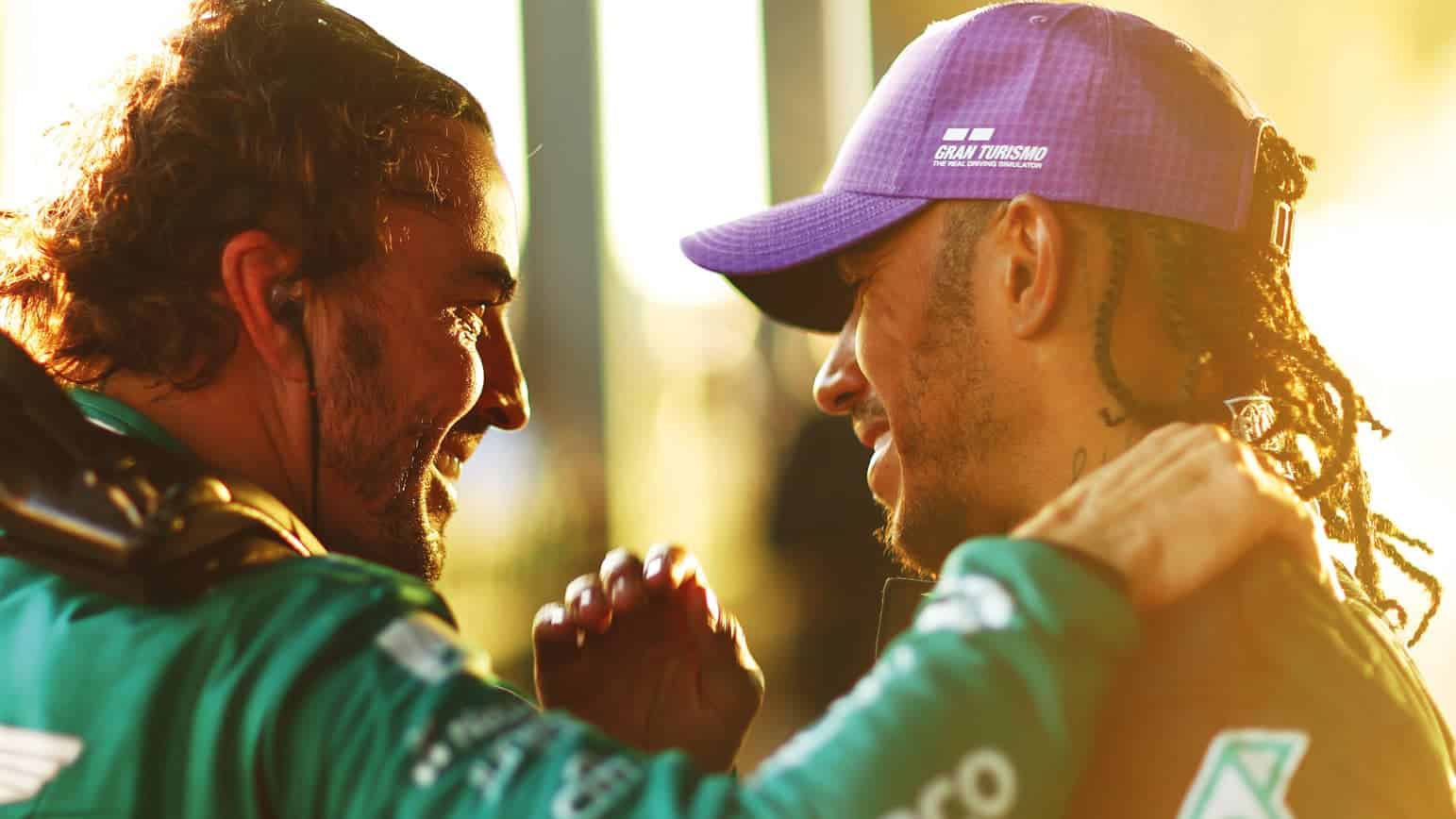
Champions together: Alonso and Lewis Hamilton shared the podium in Australia
Getty Images
Which brings us back to Red Bull and the would-be title fight between their drivers. The RB19 runs an extreme degree of anti-dive front suspension and anti-squat rear. In this way – and with appropriate underbody design – it suffers less than the other cars with how the centre of aero pressure dives forward a long way under braking before then shooting back as the driver releases the brake and the car levels out. This gives it a better through-corner balance than the other cars and also the ability to run the car lower (as there is less dive and pitch to account for), thereby increasing underbody downforce. The downside of such extreme anti-dive in the suspension geometry (it’s around 45 degrees) would typically be a tendency to lock the fronts under braking. It might also make it a little slower to generate good front tyre temperatures. A cool, smooth track would amplify these difficulties – which is exactly what Albert Park was on Friday and Saturday. Could this be what caught Pérez out in qualifying, unrelated to the engine run-on issue which had blighted his practices? Does the Red Bull require an unconventional brake bias setting because of the anti-dive front-locking traits, and was this part of Checo’s problem? Mix all these ingredients with a driver alert to the possibility of his team-mate being favoured and you have the breeding ground for paranoia.
